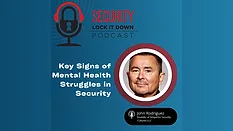
Management
Solutions for security enterprise leadership and management to enable the business.
Articles
More ArticlesAreas of Focus
Podcasts
More PodcastsBlog Posts
See MoreSign-up to receive top management & result-driven techniques in the industry.
Join over 20,000+ industry leaders who receive our premium content.
SIGN UP TODAY!Copyright ©2025. All Rights Reserved BNP Media.
Design, CMS, Hosting & Web Development :: ePublishing





.webp?height=740&t=1759369889&width=233)
